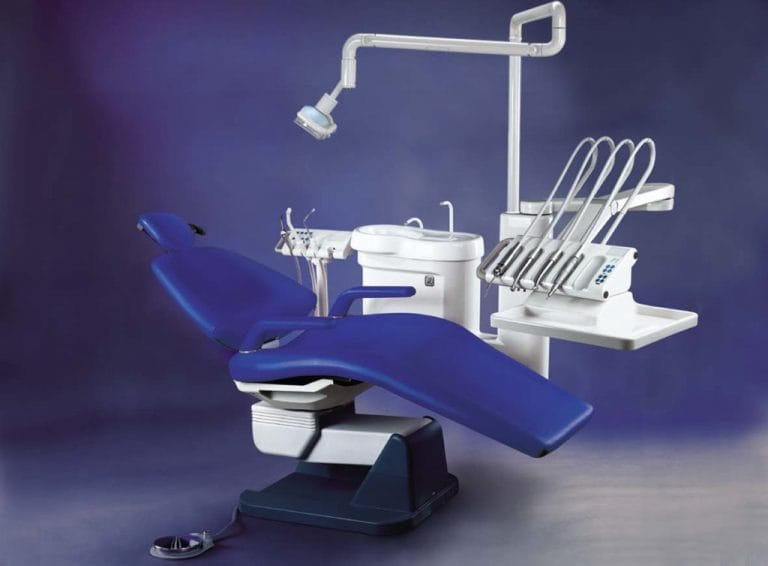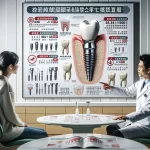In your daily routine, as you stand before the mirror with your toothbrush ready, have you ever paused to think about how far oral care has come? You’re not alone—many overlook the incredible advancements happening in the realm of dental hygiene. Did you know that over 70% of consumers are now looking for toothpaste that offers more than just cavity protection? This shift highlights a growing desire for products that enhance overall health and well-being.
Enter the Toothpaste Titans, where innovative science meets nature’s best ingredients to revolutionize how we care for our teeth. This article promises to unveil the exciting developments in oral care that go well beyond traditional cleaning, offering insights into groundbreaking formulations and sustainable practices.
Get ready to discover how these advancements can elevate your dental routine and empower you to make informed choices about your oral health!
The Oral Microbiome: A New Frontier in Dental Health
For decades, our understanding of oral hygiene has been simplistic: brush away the bad bacteria, and your teeth will be clean. However, recent scientific breakthroughs have revealed a complex ecosystem thriving within our mouths—the oral microbiome.
Dr. Sarah Chen, a leading researcher in oral microbiology, explains, “The human mouth is home to over 700 species of bacteria. While some can be harmful, many play crucial roles in maintaining our oral and overall health.” This delicate balance influences not just our risk of cavities and gum disease but also our susceptibility to systemic conditions such as:
- Cardiovascular disease
- Diabetes
- Alzheimer’s disease
As our understanding of this intricate ecosystem deepens, a paradigm shift is occurring in the world of oral care. Toothpaste manufacturers are no longer content with merely cleaning teeth; they are now striving to nurture and support the delicate balance of the oral ecosystem.
Innovations in Toothpaste Technology
Prebiotics and Probiotics: Nurturing the Oral Garden
Imagine your mouth as a lush garden. Traditional toothpastes have acted like indiscriminate weed killers, eliminating both harmful and beneficial bacteria. The new generation of toothpastes takes a more nuanced approach:
- Prebiotics: These substances act as fertilizers, nourishing beneficial bacteria. For example, arginine—a common prebiotic in modern toothpastes—serves as food for bacteria that help neutralize acid in the mouth.
- Probiotics: Live, friendly bacteria added directly to toothpaste formulations can support oral health by crowding out harmful bacteria. Strains like Streptococcus salivarius K12 and M18 have shown promise in this regard. A 2023 study published in the Journal of Dental Research found that participants using a prebiotic-infused toothpaste experienced a 37% reduction in plaque formation compared to those using traditional toothpaste.
Natural Antimicrobials: Precision Targeting
While nurturing beneficial bacteria is crucial, managing harmful microbes remains a priority. Enter natural antimicrobials—plant-based compounds that can selectively target detrimental bacteria without disrupting the entire oral ecosystem. Popular natural antimicrobials in modern toothpastes include:
- Tea tree oil
- Neem extract
- Xylitol
These ingredients offer an alternative to harsh chemicals and cater to the growing consumer demand for natural products. According to a recent market analysis, toothpastes featuring natural antimicrobials saw a 28% increase in sales in 2023 compared to the previous year.
AI and Personalization: Your Unique Oral Care Solution
The future of oral care is not one-size-fits-all. Advances in artificial intelligence (AI) and biotechnology are paving the way for personalized toothpaste formulations tailored to an individual’s unique oral microbiome. Dr. Michael Fong, CEO of OralTech Innovations, envisions a future where “consumers can submit a saliva sample for analysis, receiving a custom-blended toothpaste designed specifically for their oral health needs.” This level of personalization could revolutionize how we approach oral care, potentially reducing common dental issues and improving overall health outcomes.
Market Trends and Consumer Preferences
The global toothpaste market is experiencing significant growth driven by increasing awareness of oral health’s importance and demand for innovative products. Recent projections indicate that the market will grow by USD 2.3 billion from 2024 to 2028, with a compound annual growth rate (CAGR) of 2.08%. Key trends shaping this market include:
| Year | Global Toothpaste Market Size |
|---|---|
| 2024 | $2.1 billion |
| 2028 | $2.3 billion |
- Natural and Organic Formulations: Consumers increasingly seek products with natural ingredients free from artificial additives.
- Sustainability: Eco-friendly packaging and ethically sourced ingredients are becoming major selling points.
- Functionality: Multi-benefit toothpastes that offer whitening, sensitivity relief, and enamel protection are gaining popularity.
The Future of Oral Care: Beyond the Tube
As we look ahead, the future of oral care extends far beyond traditional toothpaste tubes. Innovations on the horizon include:
3D-Printed Custom Toothbrush Heads
Paired with personalized toothpaste formulations, custom-designed toothbrush heads could offer a truly tailored brushing experience. These heads would be designed to match the unique contours of an individual’s teeth and gums, ensuring optimal cleaning efficiency.
Integration with Health Tech
Smart toothbrushes that analyze your brushing technique are already on the market. The next step? Integration with broader health monitoring systems. Imagine a toothbrush that can detect early signs of systemic diseases through saliva analysis, providing an early warning system for conditions like diabetes or certain cancers.
Nanotechnology in Oral Care
Researchers are exploring nanoparticles in toothpaste to deliver targeted treatments, repair enamel, and even regrow teeth. While still in early stages, this technology holds immense promise for the future of dental health.
Choosing the Right Toothpaste for You
With myriad options available, selecting the right toothpaste can be overwhelming. Here’s a quick guide to help you navigate your choices:
- Assess Your Needs: Do you have sensitive teeth? Are you prone to cavities? Identifying your primary concerns will help narrow down your options.
- Check the Ingredients: Look for fluoride for cavity protection or stannous fluoride for sensitivity relief; consider natural antimicrobials if you prefer an organic approach.
- Consider Your Preferences: Texture, flavor, and packaging can influence your brushing experience.
- Consult Your Dentist: For personalized recommendations tailored to specific oral health concerns.
Conclusion: Embracing the Oral Care Revolution
As we bid farewell to viewing toothpaste merely as a cleaning agent, we welcome a future where our daily brushing routine becomes a sophisticated act of nurturing our oral ecosystem—and by extension, our overall health. The Toothpaste Titans of tomorrow are not just offering products; they’re providing gateways to healthier living.
By harnessing science’s power alongside nature’s wisdom, these innovative brands are paving the way for a future where maintaining a healthy smile is just the beginning of what we can achieve through our oral care routines. As consumers, we stand at the forefront of this revolution—an exciting opportunity to take control of our oral health like never before.
So next time you find yourself before your bathroom mirror with toothbrush in hand, remember: you’re not just cleaning your teeth; you’re nurturing a complex ecosystem that supports your overall health while participating in a revolution reshaping the future of oral care—one brush at a time.
FAQs
- What is titanium dioxide and why is it used in toothpaste? Titanium dioxide is used in toothpaste for its whitening and polishing properties; it helps remove surface stains on teeth for a brighter smile.
- Are biodegradable toothpaste pods as effective as traditional toothpaste? Yes! Biodegradable toothpaste pods provide the same cleaning benefits as traditional toothpaste while being environmentally friendly.
- How is technology changing the future of oral care? Technology is revolutionizing oral care through advancements like electric toothbrushes and innovative ingredients that enhance product effectiveness.
- Why is there a growing trend towards natural and organic oral care products? This trend stems from increased consumer awareness regarding ingredient safety and environmental impacts; people seek safer options aligning with their values.
- Can switching to eco-friendly oral care products significantly impact the environment? Absolutely! Choosing eco-friendly products like biodegradable toothpaste pods can greatly reduce plastic waste and carbon emissions—contributing to sustainability efforts globally.






